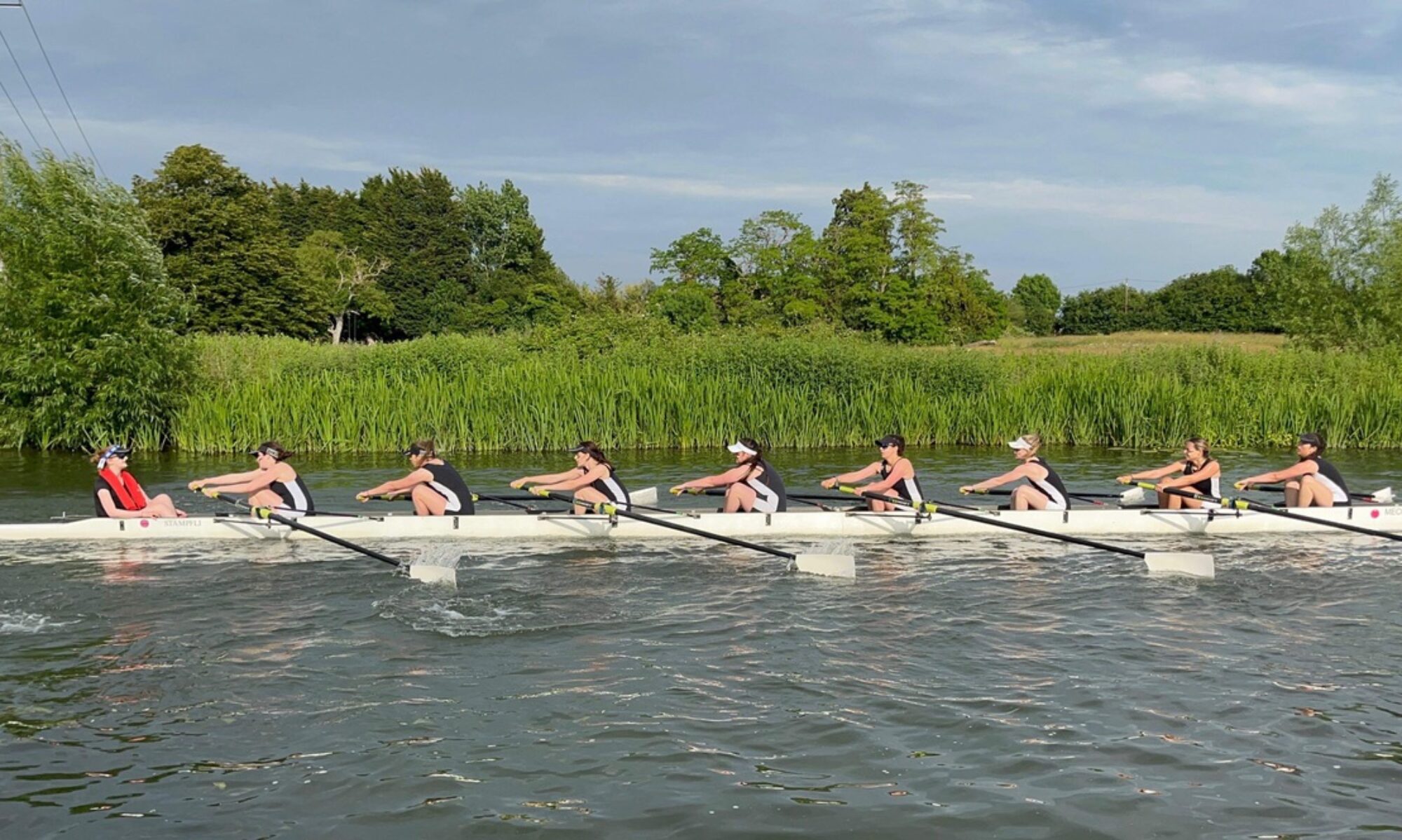After a week full of bumps and celebrations, we had to do a full mental reset to face a whole different challenge, the Women Eights Head of the River Race. For this 6.8 km adventure, we headed down to London, some of us the night before, some of us bright and early that very same morning. The crew had slight changes from the W1 we were used to – including two rowers and the boat itself – and the atmosphere had a mixture of excitement and fear in equal doses.
The tideway is nothing like the Cam, it’s tidal (go figure!), busy and quite impressive. As a cox new to those waters, I attended a couple of very helpful seminars about it and prepared better than I have for any race ever. Easier said than done! Despite our plans and all the advice we got from our Captain for Boats and alumnae familiar with boating in the area, we all managed to get completely soaked while getting into the boat. Immediately after, our boat started drifting into another one while I was still trying to connect to cox box so the crew could hear the instructions. I finally got it connect and started shouting instructions, an activity that continued nonstop for the next 3 hours.
Being 319 out of 320 was far from a pleasant experience. During those 2.5 hours of marshalling we experienced first hand the four British seasons, from sun to hail. We marshalled to our position carrying out our regular warm up, rowing all 8 square blades, so the crew could feel they had enough control, even in the tideway. We slowly gained confidence and got ready for the race. However, the race start was still 2 hours away. The tideway gives you only a few seconds of break at a time before someone has to paddle back into position. At the risk of exhausting bow and two, we tried to alternate and share the burden, while eating away all the sugary food we brought.
Still freezing from being soaked and stationary, the rowers grudgingly de-kitted and we got ready to race. Despite the long distance, the next 22 minutes and 58 seconds passed by very fast. It was soon clear we would have to pass the crew in front of us, the moment came right at Barnes Bridge. I communicated our approach to the rowers and told them we would do it right after the bridge. It went pretty smooth, taking the racing line after the crew nicely moved to the side. But that was not going to be our last overtake of the day.
We encounter rough waters but the crew remained calm and strong, gaining a lot of distance of the next crews ahead. As we approached Hammersmith Bridge I was trying to find my reference point, that famous second lamppost I had heard so much about in the seminars, when I realized we had three crews just in front of us, all trying to pass each other. We quickly came to a boat length distance with very little space in between them for us to come by. With no desire of crashing oars in the Thames, I told the rowers we needed a very stable boat and pressure and they responded immediately.
After that, we headed to the last part of the race with a big push off of the bridge, while the rowers looked up at the, by now disappearing, crowd. Getting tired but at good rhythm, we made it through the finish line. Our landing was graceful as our pushing off but everyone worked efficiently to end a day full of excitement, cold and good rowing.
Joaquina Delas Vives, cox
